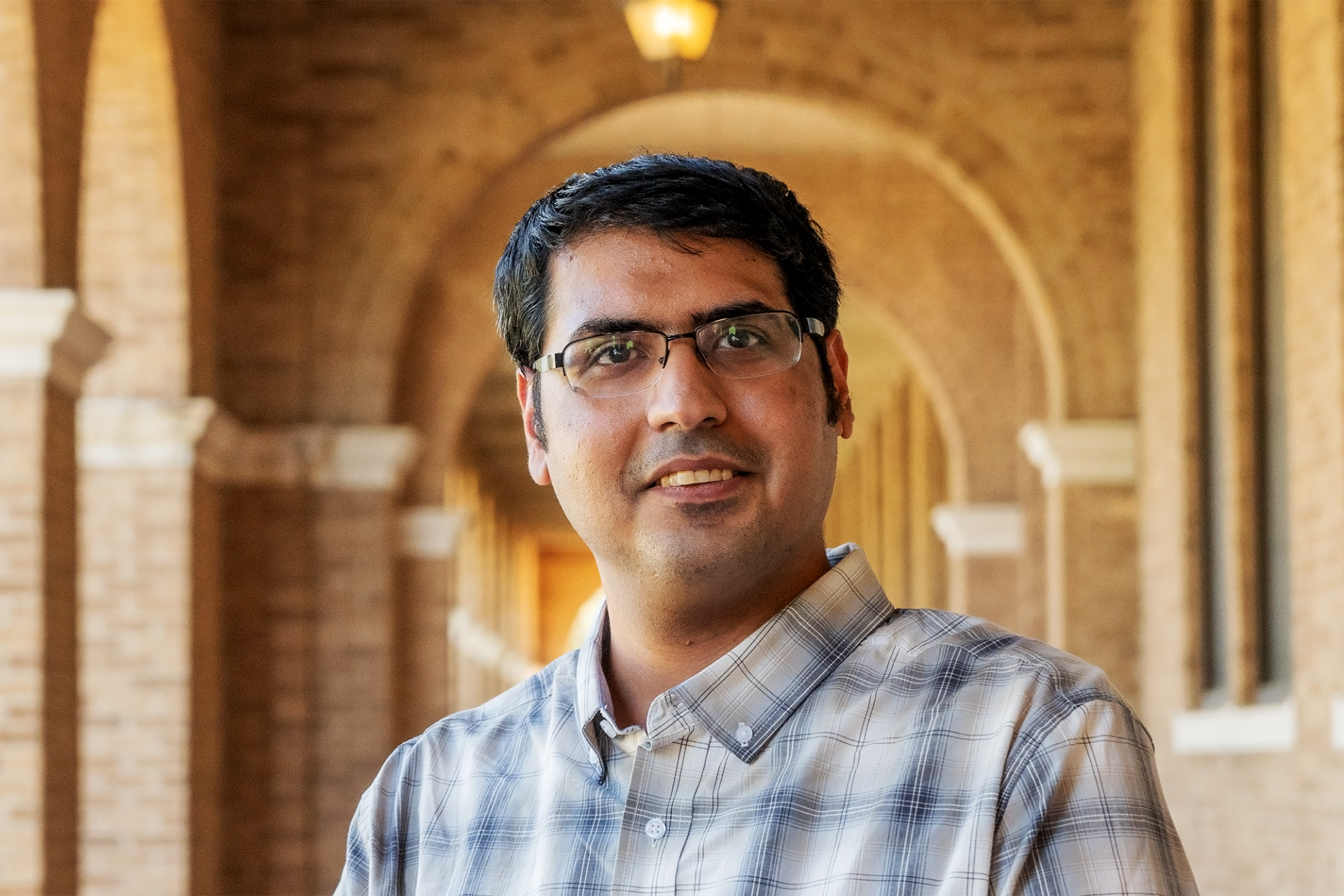Hossein Bahreinizad
Major: Ph.D. Student, Industrial and Systems Engineering
Advisor: Suman Chowdhury, Ph.D.
Hossein Bahreinizad’s journey from a small town in southern Iran to the forefront of traumatic brain injury research at the University of Florida is grounded in lifelong curiosity about the human body.
An early interest in biomechanics guided his academic and professional path, and his passion for understanding the mechanics of the human body and brain emerged in his undergrad and graduate studies in biomedical engineering. A combined love for engineering and interest in human health drew him to biomechanics.
Bahreinizad’s current research within UF’s Industrial and Systems Engineering focuses on computational biomechanical modeling of traumatic brain injury (TBI). He is developing advanced head and neck finite element models that include detailed brain structures and axonal fiber tracts.
“During my biomedical engineering studies, I became fascinated by how engineering tools can be used to solve complex medical problems. That interest naturally evolved into pursuing a Ph.D. in biomechanical modeling, where I could push the boundaries of how we understand and prevent brain injuries,” said Bahreinizad.
His models simulate various head and neck impact scenarios to study how forces travel through anatomical regions of the body and contribute to brain deformation.
“This work helps us better predict injury risk and evaluate protective strategies such as improved helmet designs to reduce the likelihood of TBI,” said Bahreinizad.
The real-world impact of his research is deeply significant. From military personnel to athletes or everyday civilians, his research has the potential to contribute to better safety, equipment and injury prevention.
“What excites me most is knowing that the models I create are not just theoretical. They have the potential to help protect people in real life. It feels meaningful to work on something that could reduce suffering and save lives,” said Bahreinizad.
His advisor, UF ISE Associate Professor Suman K. Chowdhury, Ph.D., said Bahreinizad developed a head-neck model with 42 neck muscles and ligaments to help researchers evaluate mechanical impact and better study neck injuries.
“It’s more of an injury biomedical direction. For example, in a vehicle accident we need this kind of modeling platform to better understand how crash impact affects brain tissues,” said Chowdhury.
Here is more about one of ISE department’s rising stars:
How do you see your research in real-world applications?
My helmet suspension pad design work and axonal modeling research have direct real-world applications. For example, the helmet work could improve protection for military personnel, athletes and first responders by reducing brain strain during impacts. The axonal modeling could lead to better ways of detecting and predicting brain injuries, especially those hard to diagnose, so they can be treated earlier and more effectively.
Are there any publications or recognitions you are especially proud of?
I am excited about all my research projects. The evaluation of neck-implant designs to improve their performance was especially rewarding. I am also particularly proud of our upcoming paper in the Journal of Biomechanics and Modeling in Mechanobiology, which details the development and validation of our model.
Have you been involved in any student organizations, leadership roles or mentoring at UF?
I had the opportunity to guide undergraduate students and participate in our Human Factors and Ergonomics Society (HFES) and American Society of Biomechanics (ASB) chapters. These experiences have been especially meaningful because I enjoy helping others navigate the challenges of research and watching their skills grow. It is rewarding to give back in the same way my mentors have supported me.
What interests help you recharge or stay inspired outside of your academic work?
I enjoy reading, traveling when I can and watching movies. These activities help me relax, recharge and come back to my work with fresh energy.
What message would you share with students and future researchers?
I am deeply grateful for the opportunities I have had at UF and the collaborations that have helped shape my work. Research can be challenging, but it is also incredibly rewarding when you see how your work might make a real difference. It feels meaningful to work on something that could reduce suffering and save lives.

